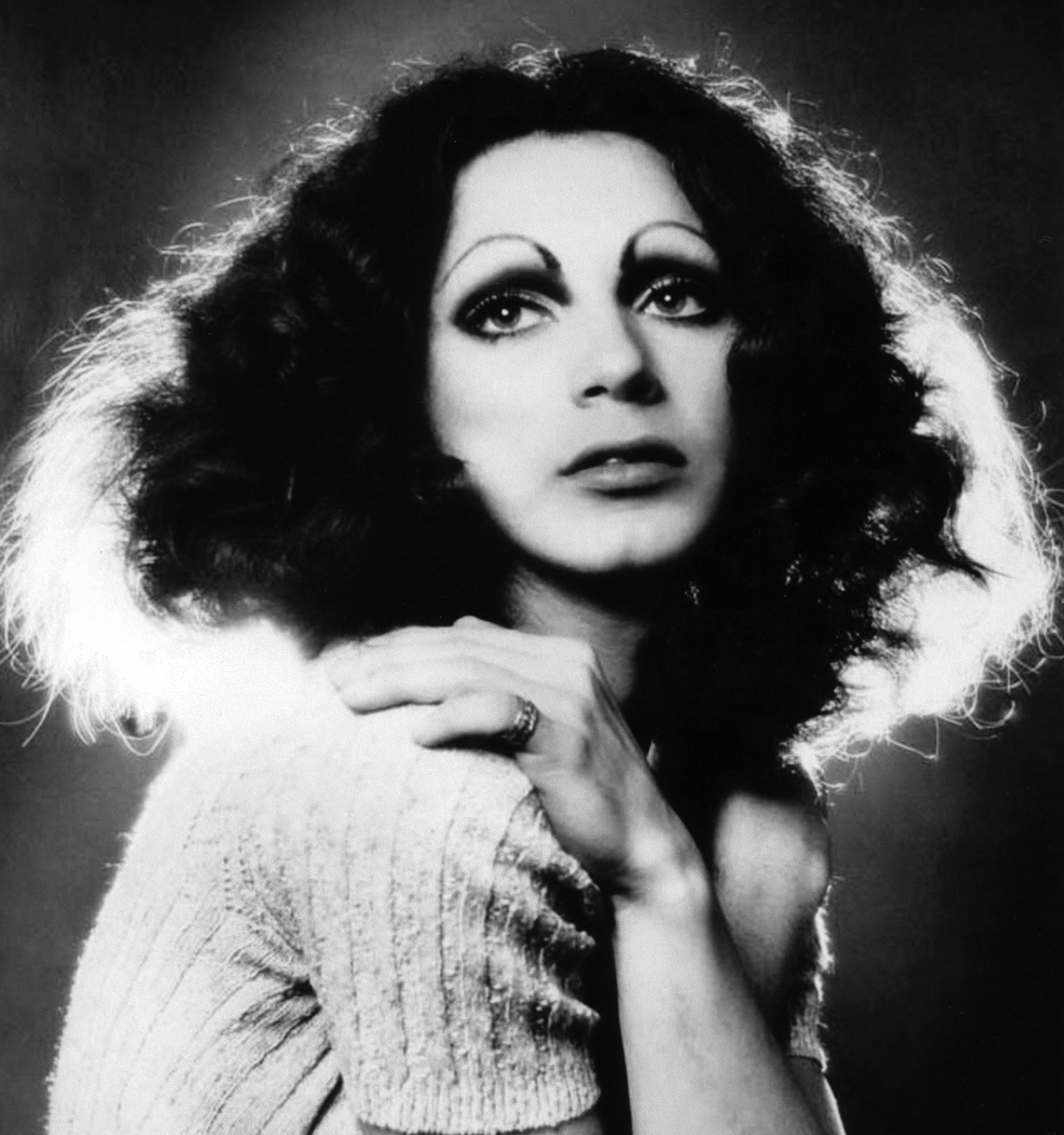Holly was the slapstick brunette in life, as on screen. She and Jackie Curtis would go into the toilets at Max’s Kansas City nightclub to fix their make-up but, amped on amphetamines they’d grow fixated and exit hours later, faces like rainbows, surprised to find that the club was closing. A funny tale, but who is Holly Woodlawn really and when the lights finally went up on Warhol’s Factory party, where had she gone?
In 62, sixteen-year-old Haroldo Santiago Dankahl left his loving Puerto Rican family in Florida and arrived in New York City wearing hot-pants and heels, singing the songs of Hispanic actress Lola Flores and holding twenty dollars in his pocket. “I never dress up like a woman,” says Holly now, exactly as he thought then, “I dress up because I want to be fabulous. It has nothing to do with whether I’m wearing pants or dresses or chiffon or cashmere or whatever the fuck, if I like it, I wear it.” And so the pursuit of ‘being’ began leading Holly through a succession of forgettable day-jobs and romantic misadventures to a niche in the decadent Big Apple nightlife where all creatures were welcomed. Dramatic, hilarious, striking and loose, Holly spiced up the spirit of bygone Hollywood goddesses with her own zany style, ensuring her meeting with kindred spirits and future room-mates Candy Darling and Jackie Curtis would be inevitable.
“I met Candy first, that was a vision. I was young and there was this exquisite person underneath a lamppost, smoking a cigarette, wearing a trench coat. Some kid, a young hustler, threw an ice-cream in her face which I thought was the most horrible thing anyone could do, so I went up to her and asked if she was ok. She said, “Yes, I’m fine. Would you please move over, you’re in my light”. I thought to myself, ‘that is a goddess.'” 1965 was followed by VIP status at Studio 54 and Max’s Kansas City for all of Warhol’s entourage yet in reality most of them (save the socialites with trust funds) were living a hand-to-mouth existence. “At that time five people would live in an apartment so it would be a dollar a week each rent,” remembers Holly, who had long taken her surname from a scene in the show I Love Lucy. “We took turns to sleep in one bed. Lee Childers and Wayne County would go to work and Jackie and I would go to sleep. They’d return at seven o’clock, slap us awake and it would be time for Jackie and I to go to Max’s Kansas City and be fabulous superstars. We shopped at the five and dime stores, we were so poor, went through five tubes of cheap lipstick a week each, but I only ever wore one shade – cocksucker red.” Jackie Curtis was a furtive writer and star of witty, ribald plays in which he cast arty scenesters from Holly to Mary Woronov and Patti Smith. Paul Morrissey cast Holly as the lead in Trash for which Hollywood director George Cukor championed Holly for an Oscar nomination (which didn’t materialise because nobody knew if Holly belonged in the male or female actors category). All of this led to non-Warhol related movies (Holly tutored Dustin Hoffman for his role in Tootsie), regular appearances at clubs like Limelight, her own cabaret show that continues to this day and theatrical roles notably in Neon Woman co-starring Divine. Holly appeared on chat shows in men and women’s clothing to the delight and consternation of middle America. As the ’80s turned, most of Holly’s libertine friends had died of drugs or AIDs related illnesses. In a recorded conversation a shocked Warhol asks, “why aren’t you having sex?” to which Holly replies, “because of what’s happening”, a subtle demonstration that true emancipation includes the option of saying no.
Recently Holly’s journey continued with a series of paintings by British artist Sadie Lee in an exhibition entitled And Then He Became A She… The paintings are yet another bold statement where Holly allowed Sadie to paint her as she is now – a sexagenarian in women’s clothing, in men’s clothing and finally, naked with a zimmer frame. “What Sadie and I tried to do was the progression,” says Holly who has lived in LA since Warhol died. “I was born sixty years ago. When I was twenty I was beautiful and what we both tried to convey was that there’s nothing wrong in growing old. My body might not work as well as it used to but my brain does and I am not afraid. When my boyfriend saw the paintings he said, “you can’t do this.” I said, “I don’t care what people think, this is who I am.” When I first saw the paintings, in private and with Sadie I kissed her and we both began to cry.” And there it stands; during all those hours in front of the mirror at Max’s Kansas City, Holly Woodlawn wasn’t searching for an answer but crafting it. “I arrived in New York City and I didn’t know what I was. All these straight guys were drawn to me, they wanted me to be a woman but I never wanted to be a woman, I wanted to be myself.” Identity is a universal quest but how many accept the challenge wholeheartedly, no matter where it leads Holly Woodlawn has lived it. Lived it and not been destroyed by any of the extremities been thrown at her. Through this time has brought a genesis, generations of curious pilgrims seeking out this cult figure who exists in spite and despite of mainstream American society. The teenage runaway who dreamed of being a star became Holly Woodlawn, a chick with balls. What else is any great Hollywood movie ever about?
Credits
Text Sarah Hay
Photography Jack Mitchell
